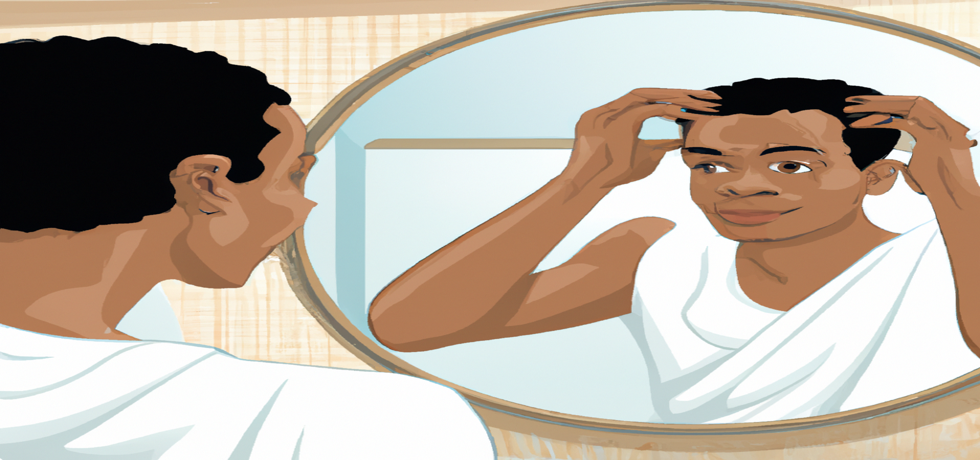
Understanding Baldness and Hair Restoration Options
Introduction to Baldness
Baldness is a common concern that affects many individuals, especially men, as they age. It can have a significant impact on self-esteem and body image. Understanding the various hair restoration options available can help individuals make informed decisions about addressing their hair loss. In this blog post, we will explore the causes of baldness and the available hair restoration treatments to aid in regrowing hair and restoring confidence.
Understanding the Causes of Baldness
Baldness typically occurs due to genetic factors, hormonal changes, and aging. The most prevalent type is male pattern baldness, which is characterized by a receding hairline and thinning crown. While many associate baldness primarily with age, it can also affect younger people. Hormones, particularly dihydrotestosterone (DHT), play a crucial role in the hair loss process. Recognizing these underlying causes enables individuals to choose suitable hair restoration options that effectively target their specific concerns.
Non-Surgical Hair Restoration Techniques
For those looking to tackle hair loss without surgery, several non-surgical treatments are available. Medications such as minoxidil and finasteride have been shown to slow hair loss and promote regrowth in some individuals. Additionally, laser therapy is gaining popularity as a way to stimulate hair follicles and enhance hair growth. Men and women struggling with hair loss may also consider using wigs and hairpieces as an instant solution to regain their confidence. These alternatives can serve as effective means to navigate through the challenges of baldness before considering surgical options.
Surgical Solutions: Hair Transplant Surgery
Hair transplant surgery is a more permanent solution for individuals with significant hair loss, particularly in cases of male pattern baldness. The process involves extracting donor hair follicles, usually from the back or sides of the scalp, and transplanting them into the thinning or bald areas. There are two primary techniques used in hair transplant surgery: Follicular Unit Extraction (FUE) and Follicular Unit Transaction (FUT). Each method has distinct benefits and may be suitable for different patients, depending on their age, level of baldness, and donor hair availability.
Myths vs. Facts About Hair Transplant Surgery
There are many misconceptions surrounding hair transplantation that can lead to fear and hesitation. For instance, a common myth is that hair transplants entirely cure baldness; however, while they can provide a fuller appearance in treated areas, they do not prevent future hair loss elsewhere. Another misconception is that older individuals cannot undergo hair transplants; in reality, candidate age frequently does not disqualify one from receiving this procedure, provided they are healthy and have sufficient donor hair. Understanding these myths allows individuals to make better-informed decisions regarding their hair restoration journey.
Aftercare and Expectations from Hair Restoration Procedures
Post-treatment care is essential for maximizing results following hair restoration. After a hair transplant, patients can often resume gentle hair washing just one day post-surgery, which ensures proper hair follicle healing. It’s important to note that hair growth will occur gradually; patients should not expect immediate results. Consistent follow-up with healthcare providers and adherence to aftercare instructions is crucial for achieving optimal outcomes.
Conclusion and Next Steps
Baldness is a common issue that can affect self-image and confidence. By understanding the various baldness causes and exploring hair restoration optionsboth surgical and non-surgicalindividuals can take proactive measures to address their hair loss. It is always advisable to consult professionals to assess your unique situation and learn which options will work best for you.
FAQs About Hair Restoration
1. How long does it take for transplanted hair to grow?
It usually takes several months before transplanted hair begins to grow, with noticeable results typically seen around the fifth month and optimal results by the one-and-a-half-year mark.
It usually takes several months before transplanted hair begins to grow, with noticeable results typically seen around the fifth month and optimal results by the one-and-a-half-year mark.
2. Is hair restoration surgery painful?
Most patients report minimal discomfort, as local anesthesia is administered prior to the procedure. Aftercare plays a crucial role in managing any potential discomfort.
3. Can women undergo hair transplant procedures?
Yes, women can also benefit from hair transplant procedures, depending on their level of hair loss and health assessments.
For professional assistance and expert advice from leading dermatologists like Dr. Hital Patel, experience the benefits of understanding baldness and hair restoration options with Hair & Skin Specialist Dr. Hital Patel at The Skin Artistry. Our clinics in PDPU Gandhinagar, Vastrapur Ahmedabad, and Hyderabad (Visiting Consultant) offer top-quality care and personalized treatments. Visit us today to learn more about our services and take advantage of our special offers! For more insights, updates, or to collaborate, stay connected with The Skin Artistry.

